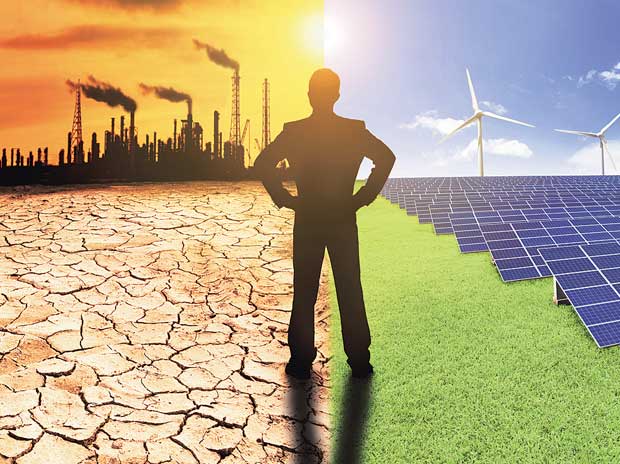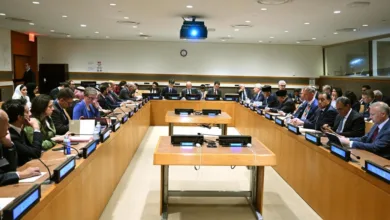The Future of Renewable Energy: Opportunities and Challenges

Renewable energy has become one of the most pressing topics of our time, as the world continues to search for sustainable solutions to reduce greenhouse gas emissions, address climate change, and build a resilient energy system for future generations. With fossil fuels still dominating global consumption, the shift toward renewable energy is not only a technological revolution but also a political, social, and economic transformation.
Understanding Renewable Energy
Renewable energy refers to power generated from natural resources that are constantly replenished, such as sunlight, wind, rain, tides, geothermal heat, and biomass. Unlike fossil fuels, which take millions of years to form and are finite in supply, renewable energy sources are sustainable and can be harnessed indefinitely if managed responsibly.
The Global Push Toward Sustainability
Over the past decade, governments, corporations, and international organizations have increasingly committed to transitioning toward renewable energy. The Paris Agreement of 2015 was a landmark moment in this journey, setting ambitious targets for reducing carbon emissions worldwide. Many countries have since adopted renewable energy targets and policies to encourage innovation and investment in clean technologies.
Solar Power: The Rising Star of Renewables
Among all renewable sources, solar power has seen the fastest growth in adoption. Technological advancements in photovoltaic cells have drastically reduced costs, making solar panels more accessible to both households and industries. Massive solar farms have been developed in countries such as China, India, and the United States, providing gigawatts of clean electricity to national grids.
One of the most promising trends is the integration of solar panels into buildings, vehicles, and even clothing. Innovations in thin-film solar cells allow energy generation without the need for traditional bulky panels. This trend, often referred to as building-integrated photovoltaics (BIPV), could revolutionize how urban areas generate and consume energy.
Wind Energy: Harnessing the Power of Nature
Wind energy remains another pillar of the renewable transition. Onshore wind farms are already common across Europe, North America, and parts of Asia, while offshore wind projects are rapidly expanding. Offshore turbines, built in seas and oceans, capture stronger and more consistent winds, generating enormous amounts of electricity.
The challenge for wind energy lies in public acceptance and environmental considerations. While wind turbines provide clean power, their installation often sparks debates about noise, aesthetics, and the impact on bird populations. Despite this, technological innovations continue to make turbines more efficient and environmentally friendly.
Hydropower and Its Role in Energy Security
Hydropower has long been the most widely used renewable energy source, accounting for a significant share of global electricity. Large-scale dams and small run-of-river projects contribute to energy security by providing reliable baseload power. However, hydropower is not without its challenges.
Environmental concerns, such as disruption of aquatic ecosystems and displacement of local communities, have led to criticism of large dam projects. Furthermore, climate change poses risks to hydropower reliability, as droughts and shifting rainfall patterns can reduce water availability.
Biomass and Geothermal Energy: Niche but Essential
Biomass energy, derived from organic materials such as plants and waste, offers a flexible renewable option that can produce electricity, heat, and biofuels. It is particularly useful for rural areas where access to other renewables may be limited. However, the sustainability of biomass depends on how resources are managed, as overexploitation can lead to deforestation and soil degradation.
Geothermal energy, which taps into the Earth’s natural heat, provides a constant and reliable source of energy. Countries like Iceland and Kenya have successfully harnessed geothermal power for both electricity and heating. The main challenge lies in its geographical limitations, as geothermal resources are only available in certain regions.
Storage and Grid Integration Challenges
One of the most significant hurdles in expanding renewable energy is the issue of storage and grid integration. Unlike fossil fuels, renewables such as solar and wind are intermittent — they depend on weather and time of day. Energy storage technologies, particularly batteries, are critical to ensuring a consistent power supply.
Lithium-ion batteries currently dominate the market, but researchers are exploring alternatives such as solid-state batteries, hydrogen storage, and pumped hydro storage. Smart grids, which use advanced digital technology to balance supply and demand in real time, also play a key role in integrating renewables effectively.
The Economic Impact of Renewable Energy
The renewable energy sector has become a major driver of economic growth and job creation. Solar and wind industries employ millions of people worldwide, with opportunities ranging from manufacturing and installation to maintenance and research.
Investment in renewable energy is also reshaping global financial markets. Green bonds, renewable energy funds, and sustainable investment portfolios are attracting trillions of dollars from institutional investors. As costs continue to fall, renewables are increasingly seen not just as environmentally friendly, but also as economically competitive.
Political and Social Dimensions
The transition to renewable energy is not only a technological challenge but also a deeply political and social one. Energy policy decisions shape global geopolitics, influencing trade, security, and diplomacy. Countries rich in renewable resources are gaining new strategic advantages, while traditional oil and gas exporters face pressure to diversify their economies.
Social acceptance of renewable energy projects is equally important. Communities must be involved in decision-making processes, ensuring that the benefits of clean energy are shared fairly and that negative impacts are minimized. Public awareness campaigns and educational initiatives are critical to fostering support for renewable initiatives.
Innovations Driving the Future
The renewable energy sector continues to evolve rapidly, driven by innovations in technology, finance, and policy. Emerging trends include:
-
Floating solar farms on lakes and reservoirs
-
Hybrid renewable systems combining solar, wind, and storage
-
Artificial intelligence for energy management
-
Green hydrogen as a clean fuel for industries and transport
-
Decentralized energy systems enabling communities to produce their own power
These innovations hold the potential to overcome existing challenges and accelerate the global energy transition.
Conclusion: Building a Sustainable Future
The future of renewable energy is filled with both opportunities and challenges. While technological progress has made clean energy more accessible and affordable than ever before, significant obstacles remain in storage, infrastructure, and political commitment.
The global community faces a critical moment in history: the decisions made today about energy production and consumption will shape the health of our planet for generations to come. Transitioning to renewable energy is not just an environmental necessity — it is an economic and social imperative that offers the promise of a cleaner, fairer, and more sustainable future.




